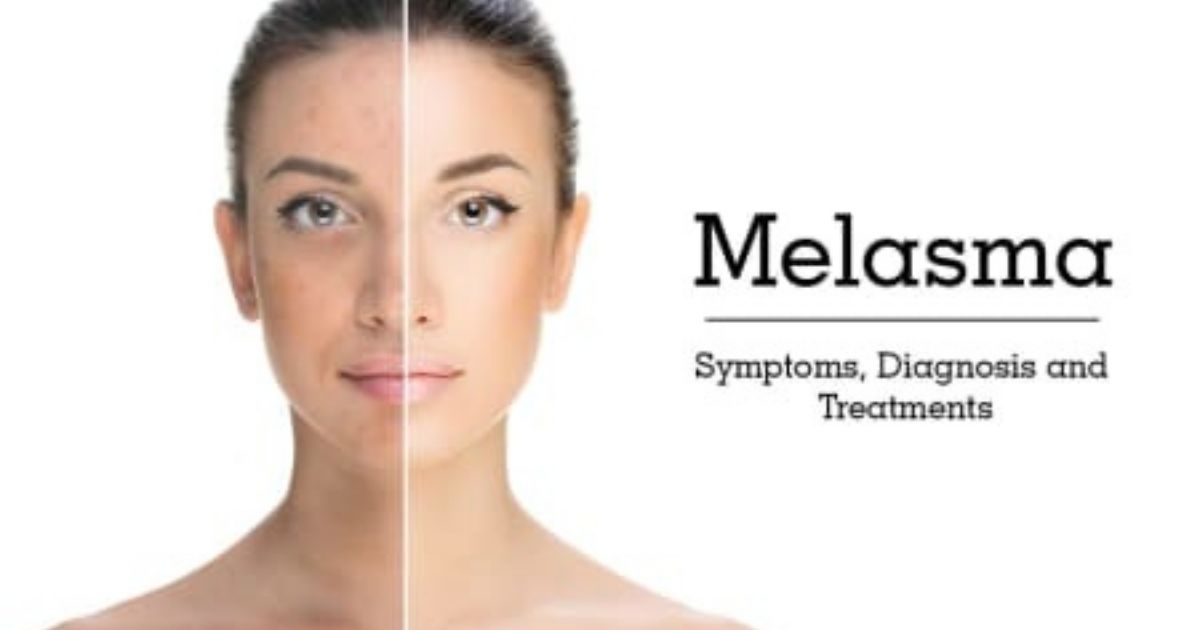Melasma is characterized by grayish or brownish discoloration on the face and other parts of the body. It commonly occurs in women with darker skin colors, such as African-Americans, Latin Americans, Continental Indian Americans, and Asian Americans. This condition is so prevalent that according to Medscape, it affects as much as 5 million people in the United States.
Melasma can be triggered by a variety of factors, such as:
- Sun Exposure
One of the most common causes of melasma is sun exposure. UVA and UVB rays affect the skin in such a way that they trigger increased production of melanin. As such, symptoms are usually more pronounced in summer – and tend to improve during the wintertime.
Living in tropical regions, as well as higher altitudes (such as the Andes) can also make melasma more severe and prevalent. After all, these areas are more exposed to the sun.
Infrared radiation and visible light can contribute to melasma as well. This explains why bakers (exposed to ovens) and dentists (exposed to lights) usually develop skin hyperpigmentation.
With that being said, wearing sunscreen is important to reduce melasma. According to a study, wearing a high-protection factor sunblock can lessen severity by as much as 50%. In pregnant women, sunscreen use can help reduce the risk by as much as 90%.
- Pregnancy
Otherwise known as chloasma gravidarum or the mask of pregnancy, it affects 15 to 50% of expecting women. Estrogen and progesterone, which help make the uterus conducive to the fetus, are the main culprits behind this skin condition.
Estrogen can act on melanocytes, which can then lead to enhanced skin pigmentation. Progesterone, on the other hand, helps increase the number of enzymes that affect skin color.
Melanocyte-stimulating hormone (MSH), which is highly present during the second trimester of pregnancy, also contributes to the mask of pregnancy. After all, this substance’s main goal is to stimulate the production of melanin, which is responsible for skin pigmentation.
Despite the prevalence of melasma in pregnancy, it can fade away once the hormone levels normalize. This usually occurs one year after childbirth.
- Birth Control Pill Use

Like pregnancy, oral contraceptive pills (OCP) can increase hormone levels in the body. Most pills contain estrogen and progesterone, which, as mentioned, can influence melanin production in the skin. Additionally, OCP use also increases MSH concentrations in the body.
OCP-related melasma occurs in high numbers. According to a study, it can affect as much as 29% of users. What’s worse, approximately 82% of these pill users develop melasma once they got pregnant.
The best way to stop OCP-related melasma is to not take the said pills. But if this is not an option for you, you can engage in several treatment options, which will be discussed below.
- Thyroid Disorders
Melasma is also linked with thyroid disorders. In fact, a study shows that those with melasma are 4 times more likely to have thyroid problems. In these individuals, the following markers are unusually high:
- Thyroid-Stimulating Hormone, which is implicated in hypothyroidism (underactive thyroid)
- Anti-Thyroid Peroxidase, which is seen in an underactive thyroid
- Anti-Thyroglobulin antibody, which is associated with hyperthyroidism and Hashimoto’s thyroiditis
- Genetics
As with most conditions, melasma can run in the family. According to a study, melasma runs in families 55 to 65% of the time. Inherited genes that affect a person’s pigmentation, hormones, and inflammatory processes may be to blame for this.
- Use of Certain Skincare Products
While most skincare products are designed to make you look better, some can trigger melasma. According to a study, certain ingredients can trigger symptoms – or worsen severity in others. These include:
- Cetrimide, an ammonium salt formulation used to prevent infections
- Gallate Mix, an antioxidant used for certain creams and emulsions
- Thiomersal, a mercury-based preservative used in certain products
- Low levels of Vitamin D
Vitamin D is needed for bone metabolism, muscle function, and immunity. Low levels of this can result in frequent infections, tiredness and fatigue, and bone pain and loss, to name a few.
Accordingly, a study has also shown that it is linked with melasma occurrence. Research showed that Vitamin D levels are markedly decreased in melasma patients, with results showing an average of 11.32 ng/ml (deficiency is considered at a level of less than 12 ng/ml). This is in comparison to ‘healthy’ subjects, whose Vitamin D levels average at 19.86 ng/ml.
Treatments for Melasma

Although melasma can disappear on its own, some people can suffer from it for years. If you want to get rid of your skin discoloration at the soonest possible time, you may opt for any of these recommended treatments:
- Hydroquinone
Hydroquinone, which comes in lotions, creams, gels, and liquids, is usually the first line of treatment against melasma. When applied to the skin, hydroquinone can help lighten the skin.
While Hydroquinone can be useful, it usually comes with several side effects. They include skin dryness, stinging, redness, and some mild burning.
- Tretinoin or Corticosteroids
Apart from hydroquinone, your dermatologist might prescribe a second type of medication. It could be Tretinoin or a corticosteroid. Tretinoin side effects include skin dryness, stinging, irritation, or severe burning. It might lead to blistering, crusting, and peeling as well.
Corticosteroids, on the other hand, can have the same side effects. Users may experience irritation, burning, redness, dryness, and itchiness after use.
- Azelaic Acid or Kojic Acid
Azelaic acid, which is available in a 20% cream formulation, can help lighten skin discolorations. It is deemed to be better than hydroquinone and can be safely used during pregnancy. Unfortunately, it can also lead to skin irritation.
Kojic acid is another alternative bleaching treatment for melasma. While it is useful for inhibiting melanin production, it can result in skin swelling, redness, itchiness, irritation, and some pain.
- Dermatological Procedures
If these medications are not effective in reducing melasma patches, your physician might recommend some dermatological procedures. Treatments that can help lighten the skin include dermabrasion, microdermabrasion, chemical peels, and laser treatments, to name a few.
Home Remedies
If you dislike the side effects of the medications stated above – and if you can’t afford expensive derma treatments – then you may try several home remedies for melasma.
For one, Turmeric powder and 10 tablespoons can be used for a melasma-reducing mask. This paste is preferred by many because it may help reduce melanin production.
Used green tea bags may help improve skin pigmentation as well. According to research, green tea extract is a worthy option for lightening dark spots.
Melasma is caused by several things – as it can be treated by many medications and procedures. As such, it is important to determine what triggers your condition – so you can get the best treatment for your skin.

 Add to favorites
Add to favorites 





Be the first to comment